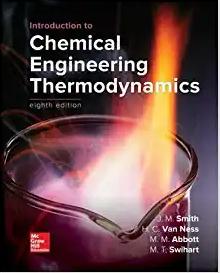Question
) 2.3 Isopropyl alcohol, water vapor, hydrogen, and other reactor exit gases that have not yet been reacted are delivered to a condenser, where the
) 2.3 Isopropyl alcohol, water vapor, hydrogen, and other reactor exit gases that have not yet been reacted are delivered to a condenser, where the majority of the acetone, water vapor, and alcohol condense away and are only marginally present as gases. The last traces of acetone and alcohol are eliminated in a scrubber where gases flow against the flow of water coming in from above. In order to obtain pure acetone as a distillate and an effluent that is composed of both water and alcohol, the 4 condensate from the condenser is combined with the effluent from the scrubber and sent to a distillation column. A second distillation column is used to separate the isopropyl alcohol, which contains around 91% alcohol, from the excess water in the effluent. To the reactor it gets recycled. The reaction is carried out at temperatures between 400 and 500 C and between 4 and 5 Bars of pressure using zinc oxide as a catalyst. The yield of acetone is around 98%, and 85% to 90% of the isopropyl alcohol is converted through the reactor per pass. For the plant process description given above, which five process variables are likely to be controlled? (5) [27 Marks]
Step by Step Solution
There are 3 Steps involved in it
Step: 1

Get Instant Access to Expert-Tailored Solutions
See step-by-step solutions with expert insights and AI powered tools for academic success
Step: 2

Step: 3

Ace Your Homework with AI
Get the answers you need in no time with our AI-driven, step-by-step assistance
Get Started


